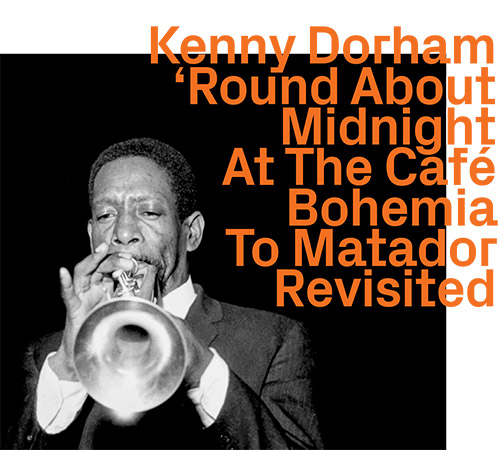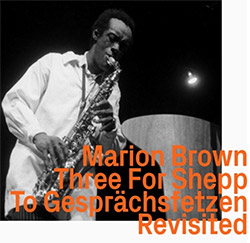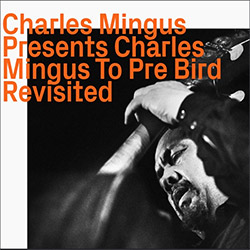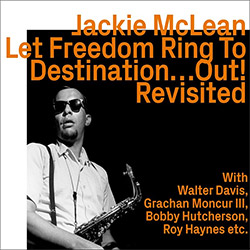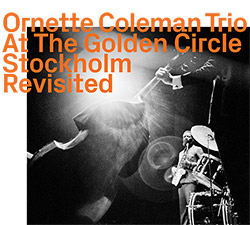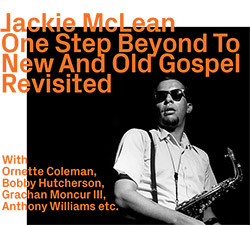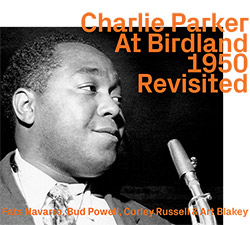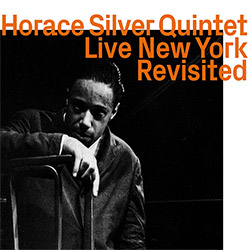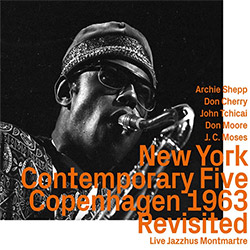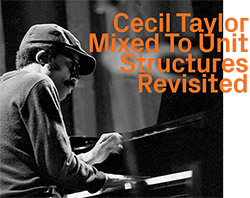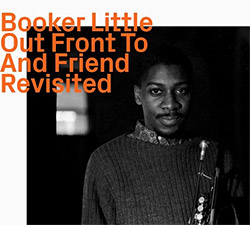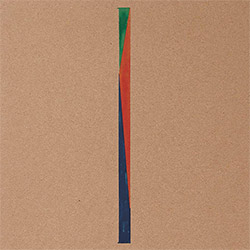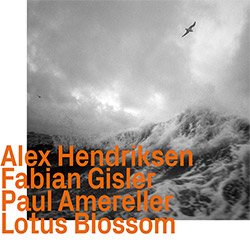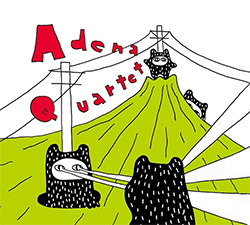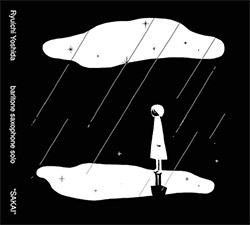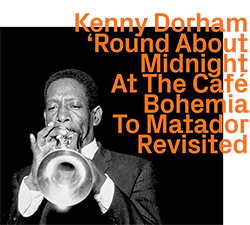
Revisiting and remastering two essential albums from New York hard bop trumpeter Kenny Dorham, a tremendous musican who died much too young but left a legacy of 20 albums as a leader, here in his 1956 Blue Note album in a sextet that included Bobby Timmons and Kenny Burrell, and his 1963 United Artists Jazz album in a quintet with Jackie McLean, Bobby Timmons, Teddy Smith and JC. Moses.
In Stock
Quantity in Basket: None
Log In to use our Wish List
Shipping Weight: 2.00 units
Sample The Album:
Kenny Dorham-trumpet
J.R.Monterose-tenor saxophone
Kenny Burrell-guitar
Bobby Timmons-piano
Sam Jones-double bass
Arthur Edgehill-drums
Kenny Dorham-trumpet
Jackie McLean-alto saxophone
Teddy Smith-double bass
J.C. Moses-drums
Click an artist name above to see in-stock items for that artist.
UPC: 752156117322
Label: ezz-thetics by Hat Hut Records Ltd
Catalog ID: ezz-thetics 1173
Squidco Product Code: 34807
Format: CD
Condition: New
Released: 2024
Country: Switzerland
Packaging: Cardboard Gatefold
Tracks 1-6 recorded live on May 31st, 1965, by Rudy Van Gelder.
Tracks 7-12 recorded in NYC, on April 15th, 1965.
'Round About Midnight At The Café Bohemia originally released in 1956 as a vinyl LP on the Blue Note label with catalog code BLP 1524.
Matador originally released in 1963 as a vinyl LP on the United Artists Jazz label with catalog code UAJ 14007.
"McKinley Howard Dorham has often seemed a middling kind of fellow. There are no dramatic stories or scandals attached to his name. He's largely known to the present-day jazz public for his best known composition, "Blue Bossa", which still turns up in band-books, and he left the scene early, not violently like his fellow-trumpeters Lee Morgan and Clifford Brown, but as the result of kidney disease, which greatly restricted his activities in his final years. He was only 48, not as painfully young as another hornman of the rising generation Booker Little, and his passing didn't cause any earthquakes or rend any veils. It's very hard to avoid using that cant critical term, "underrated", when his name comes up.
And yet, when one looks back at his career, Dorham was present at some of the most important epochs in modern jazz. He worked with Charlie Parker in 1948 and was a member of the original Jazz Messengers. He later formed a band of his own called the Jazz Prophets, who recorded some of the music you're holding. He was an early supporter of Joe Henderson and something of a pioneer in the introduction of Latin/Brazilian elements into post-bop jazz.
"Mexico City" from 'Round About Midnight At The Café Bohemia is a reworking of the changes to a Bud Powell tune. A couple of other Dorham "compositions" reveal themselves to be similar contrafacts and variations, reinforcing the impression that here is one of the music's footsoldiers and supporting cast, Horatio but never the Prince.
Here's a chance to start rowing back on this extraordinary prejudice. Dorham was one of the most original thinkers of the time. The original cover of the Café Bohemia recording finds Dorham superimposed over a silhouetted cityscape, wearing a bright check jacket but with a faraway, unreadable look in his eyes. As a player, he was one of those ever-presents, a little like Freddie Hubbard a little later, who turned up so often on other people's recordings that we stopped paying much attention to him, rather like one of those "what-his-name-again?" character actors who turned up in last night's miniseries and is onscreen again tonight, playing someone else.
Ask a modern jazz fan to name Kenny Dorham's albums and you might elicit half a dozen, maybe ten from a more serious collector. Truth is, that in a scant decade from 1953 - on Charles Mingus's Debut label - through the pioneering Afro-Cuban to Trompeta Toccata back on Blue Note in 1964, Dorham made a total of twenty records under his own name. I'd contend that they contain some of the most interesting modern jazz of the period.
There's a track on that final album called "Night Watch", a blues-based idea nestling in amongst a group of Latin themes that, according to studio legend, even had Blue Note's Alfred Lion and Alfred Wolff dancing along. "Night Watch" is arguably the signature Dorham composition, a bright line etched against a dark background, the way Kenny's jacket stands out against the imaginary city on the cover of 'Round About Midnight At The Café Bohemia, an album dominated by minor keys and the unity of mood that was always a defining feature of Kenny's records. His own solos are models of grace and what can only be described as tact. Unlike most trumpeters, he disdained to showboat. Ironically, he did make an album of that name, based on the Kern-Hammerstein musical, but showboating wasn't in his nature.
Five years after the Café Bohemia date, he was in Sound Makers studio in New York City with Jackie Mclean, Bobby Timmons, bassist Teddy Smith and drummer J.C. Moses to make what became Matador. If the earlier album is still cited as a classic by jazz reviewers, the later record has all but receded from view. It's not clear whether producer Alan Douglas didn't think Kenny's "El Matador" was sufficiently commercial, but it's brought to a halt before it really has a chance to get under way. Maybe he was just softening us up for McLean's "Melanie", which follows and remains one of the most exciting jazz performances of the early 1960s. McLean had recorded the same theme as "Melody For Melonae" on his Let Freedom Ring but also as "Melanie" with Freddie Redd some time before; maybe the change of spelling was down to studio mis-hearing. What matters more than the discographical niceties is the quality of the performance. Dorham's thoughtful, questioning, slightly mournful horn sound is a perfect foil for McLean's preacher-ish wail, and together they propel Bobby Timmons into a career-defining solo. It's the longest track on the album and the best, though there's more to be learned about Dorham from the duo reading of a Villa-Lobos "Prelude" a little later.
Dorham might have gone on to make large-scale, ambitious, concept works with orchestra. We'll never know. What we do know is that he thought deeply about his art and rethought or subtly repositioned every piece of music that came his way. Think of him as a photographer changing the lighting and thus transforming the picture. Sure, he's "underrated", but that's easily rectified. Just listen to him."-Brian Morton
Artist Biographies
• Show Bio for Kenny Dorham "McKinley Howard "Kenny" Dorham (August 30, 1924 - December 5, 1972) was an American jazz trumpeter, singer, and composer. Dorham's talent is frequently lauded by critics and other musicians, but he never received the kind of attention or public recognition from the jazz establishment that many of his peers did. For this reason, writer Gary Giddins said that Dorham's name has become "virtually synonymous with underrated." Dorham composed the jazz standard "Blue Bossa", which first appeared on Joe Henderson's album Page One. Dorham was one of the most active bebop trumpeters. He played in the big bands of Lionel Hampton, Billy Eckstine, Dizzy Gillespie, and Mercer Ellington and the quintet of Charlie Parker. He joined Parker's band in December 1948. He was a charter member of the original cooperative Jazz Messengers. He also recorded as a sideman with Thelonious Monk and Sonny Rollins, and he replaced Clifford Brown in the Max Roach Quintet after Brown's death in 1956. In addition to sideman work, Dorham led his own groups, including the Jazz Prophets (formed shortly after Art Blakey took over the Jazz Messengers name). The Jazz Prophets, featuring a young Bobby Timmons on piano, bassist Sam Jones, and tenorman J. R. Monterose, with guest Kenny Burrell on guitar, recorded a live album 'Round About Midnight at the Cafe Bohemia in 1956 for Blue Note. In 1963 Dorham added the 26-year-old tenor saxophonist Joe Henderson to his group, which later recorded Una Mas (the group also featured a young Tony Williams). The friendship between the two musicians led to a number of other albums, such as Henderson's Page One, Our Thing and In 'n Out. Dorham recorded frequently throughout the 1960s for Blue Note and Prestige Records, as leader and as sideman for Henderson, Jackie McLean, Cedar Walton, Andrew Hill, Milt Jackson and others. Dorham's later quartet consisted of some well-known jazz musicians: Tommy Flanagan (piano), Paul Chambers (double bass), and Art Taylor (drums). Their recording debut was Quiet Kenny for the Prestige Records' New Jazz label, an album which featured mostly ballads. An earlier quartet featuring Dorham as co-leader with alto saxophone player Ernie Henry had released an album together under the name "Kenny Dorham/Ernie Henry Quartet." They produced the album 2 Horns / 2 Rhythm for Riverside Records in 1957 with double bassist Eddie Mathias and drummer G.T. Hogan. In 1990 the album was re-released on CD under the name "Kenny Dorham Quartet featuring Ernie Henry." During his final years Dorham suffered from kidney disease, from which he died on December 5, 1972, aged 48. On June 25, 2019, The New York Times Magazine listed Kenny Dorham among hundreds of artists who recorded for record labels whose master recordings were reportedly destroyed in the 2008 Universal fire." ^ Hide Bio for Kenny Dorham • Show Bio for Kenny Dorham "McKinley Howard "Kenny" Dorham (August 30, 1924 - December 5, 1972) was an American jazz trumpeter, singer, and composer. Dorham's talent is frequently lauded by critics and other musicians, but he never received the kind of attention or public recognition from the jazz establishment that many of his peers did. For this reason, writer Gary Giddins said that Dorham's name has become "virtually synonymous with underrated." Dorham composed the jazz standard "Blue Bossa", which first appeared on Joe Henderson's album Page One. Dorham was one of the most active bebop trumpeters. He played in the big bands of Lionel Hampton, Billy Eckstine, Dizzy Gillespie, and Mercer Ellington and the quintet of Charlie Parker. He joined Parker's band in December 1948. He was a charter member of the original cooperative Jazz Messengers. He also recorded as a sideman with Thelonious Monk and Sonny Rollins, and he replaced Clifford Brown in the Max Roach Quintet after Brown's death in 1956. In addition to sideman work, Dorham led his own groups, including the Jazz Prophets (formed shortly after Art Blakey took over the Jazz Messengers name). The Jazz Prophets, featuring a young Bobby Timmons on piano, bassist Sam Jones, and tenorman J. R. Monterose, with guest Kenny Burrell on guitar, recorded a live album 'Round About Midnight at the Cafe Bohemia in 1956 for Blue Note. In 1963 Dorham added the 26-year-old tenor saxophonist Joe Henderson to his group, which later recorded Una Mas (the group also featured a young Tony Williams). The friendship between the two musicians led to a number of other albums, such as Henderson's Page One, Our Thing and In 'n Out. Dorham recorded frequently throughout the 1960s for Blue Note and Prestige Records, as leader and as sideman for Henderson, Jackie McLean, Cedar Walton, Andrew Hill, Milt Jackson and others. Dorham's later quartet consisted of some well-known jazz musicians: Tommy Flanagan (piano), Paul Chambers (double bass), and Art Taylor (drums). Their recording debut was Quiet Kenny for the Prestige Records' New Jazz label, an album which featured mostly ballads. An earlier quartet featuring Dorham as co-leader with alto saxophone player Ernie Henry had released an album together under the name "Kenny Dorham/Ernie Henry Quartet." They produced the album 2 Horns / 2 Rhythm for Riverside Records in 1957 with double bassist Eddie Mathias and drummer G.T. Hogan. In 1990 the album was re-released on CD under the name "Kenny Dorham Quartet featuring Ernie Henry." During his final years Dorham suffered from kidney disease, from which he died on December 5, 1972, aged 48. On June 25, 2019, The New York Times Magazine listed Kenny Dorham among hundreds of artists who recorded for record labels whose master recordings were reportedly destroyed in the 2008 Universal fire." ^ Hide Bio for Kenny Dorham • Show Bio for Jackie McLean "John Lenwood "Jackie" McLean (May 17, 1931 - March 31, 2006) was an American jazz alto saxophonist, composer, bandleader, and educator, and is one of the few musicians to be elected to the DownBeat Hall of Fame in the year of their death. McLean was born in New York City. His father, John Sr., played guitar in Tiny Bradshaw's orchestra. After his father's death in 1939, Jackie's musical education was continued by his godfather, his record-store-owning stepfather, and several noted teachers. He also received informal tutoring from neighbors Thelonious Monk, Bud Powell, and Charlie Parker. During high school McLean played in a band with Kenny Drew, Sonny Rollins, and Andy Kirk, Jr. (the saxophonist son of Andy Kirk). Along with Rollins, McLean played on Miles Davis' Dig album, when he was 20 years old. As a young man he also recorded with Gene Ammons, Charles Mingus (for Pithecanthropus Erectus), George Wallington, and as a member of Art Blakey's Jazz Messengers. McLean joined Blakey after reportedly being punched by Mingus. Fearing for his life, McLean pulled out a knife and contemplated using it against Mingus in self-defense, but later stated that he was grateful that he had not stabbed the bassist. McLean's early recordings as leader were in the hard bop school. He later became an exponent of modal jazz without abandoning his foundation in hard bop. Throughout his career he was known for a distinctive tone, akin to the tenor saxophone and often described with such adjectives as "bitter-sweet", "piercing", or "searing", a slightly sharp pitch, and a strong foundation in the blues. McLean was a heroin addict throughout his early career, and the resulting loss of his New York City cabaret card forced him to undertake a large number of recording dates to earn income in the absence of nightclub performance opportunities. Consequently, he produced an extensive body of recorded work in the 1950s and 1960s. He was under contract with Blue Note Records from 1959 to 1967, having previously recorded for Prestige. Blue Note offered better pay and more artistic control than other labels, and his work for this organization is highly regarded and includes leadership and sideman dates with a wide range of musicians, including Donald Byrd, Sonny Clark, Lee Morgan, Ornette Coleman, Dexter Gordon, Freddie Redd, Billy Higgins, Freddie Hubbard, Grachan Moncur III, Bobby Hutcherson, Mal Waldron, Tina Brooks and many others. In 1962, he recorded Let Freedom Ring for Blue Note. This album was the culmination of attempts he had made over the years to deal with harmonic problems in jazz, incorporating ideas from the free jazz developments of Ornette Coleman and the "new breed" which inspired his blending of hard bop with the "new thing": "the search is on, Let Freedom Ring". Let Freedom Ring began a period in which he performed with avant-garde jazz musicians rather than the veteran hard bop performers he had been playing with previously. His adaptation of modal jazz and free jazz innovations to his vision of hard bop made his recordings from 1962 on distinctive. McLean recorded with dozens of musicians and had a gift for spotting talent. Saxophonist Tina Brooks, trumpeter Charles Tolliver, pianist Larry Willis, trumpeter Bill Hardman, and tubist Ray Draper were among those who benefited from McLean's support in the 1950s and 1960s. Drummers such as Tony Williams, Jack DeJohnette, Lenny White, Michael Carvin, and Carl Allen gained important early experience with McLean. In 1967, his recording contract, like those of many other progressive musicians, was terminated by Blue Note's new management. His opportunities to record promised so little pay that he abandoned recording as a way to earn a living, concentrating instead on touring. In 1968, he began teaching at The Hartt School of the University of Hartford. He later set up the university's African American Music Department (now the Jackie McLean Institute of Jazz) and its Bachelor of Music degree in Jazz Studies program. His Steeplechase recording New York Calling, made with his son René McLean, showed that by 1980 the assimilation of all influences was complete. In 1970, he and his wife, Dollie McLean, along with jazz bassist Paul (PB) Brown, founded the Artists Collective, Inc. of Hartford, an organization dedicated to preserving the art and culture of the African Diaspora. It provides educational programs and instruction in dance, theatre, music and visual arts. The membership of McLean's later bands were drawn from his students in Hartford, including Steve Davis and his son René, who is a jazz saxophonist and flautist as well as a jazz educator. Also in McLean's Hartford group was Mark Berman, the jazz pianist and broadway conductor of Smokey Joe's Cafe and Rent. In 1979 he reached No. 53 in the UK Singles Chart with "Doctor Jackyll and Mister Funk". This track, released on RCA as a 12" single, was an unusual sidestep for McLean to contribute towards the funk/disco revolution of the late 1970s. Many people, at the time, in the clubs where it was played confused the female singers on the track with his name thinking he was actually female. He received an American Jazz Masters fellowship from the National Endowment for the Arts in 2001 and numerous other national and international awards. McLean was the only American jazz musician to found a department of studies at a university and a community-based organization almost simultaneously. Each has existed for over three decades. McLean died on March 31, 2006, in Hartford, Connecticut after a long illness. In 2006, Jackie McLean was elected to the DownBeat Hall of Fame via the International Critics Poll. He is interred in Woodlawn Cemetery, The Bronx, New York City. A. B. Spellman's 1966 study, Black Music, Four Lives: Cecil Taylor, Ornette Coleman, Herbie Nichols, Jackie McLean, still in print, includes extensive mid-career reflections by McLean on his youth and career to date. Derek Ansell's full-length biography of McLean, Sugar Free Saxophone. details the story of his career and provides a full analysis of his music on record." ^ Hide Bio for Jackie McLean • Show Bio for J.C. Moses "J.C. Moses (October 18, 1936 - 1977) was an American jazz drummer. He was born in Pittsburgh, Pa and first began playing around Pittsburgh in the 1950s with Stanley Turrentine and brother Tommy Turrentine. In the 1960s he worked with Clifford Jordan, Kenny Dorham and Eric Dolphy. In 1963, he performed and recorded with the New York Contemporary Five, a group that included Archie Shepp, John Tchicai and Don Cherry among its members. In 1964 he played with Tchicai and Roswell Rudd in the New York Art Quartet, and following this with Bud Powell, Charles Lloyd, Roland Kirk, Andrew Hill and Sam Rivers. He moved to Copenhagen around 1969, where he was house drummer at the Montmartre Club, playing with Ben Webster and Dexter Gordon among others. He played less in the 1970s due to failing health and returned to Pittsburgh, where he played with Nathan Davis and Eric Kloss. He never recorded as a leader." ^ Hide Bio for J.C. Moses
7/10/2024
Have a better biography or biography source? Please Contact Us so that we can update this biography.
7/10/2024
Have a better biography or biography source? Please Contact Us so that we can update this biography.
7/10/2024
Have a better biography or biography source? Please Contact Us so that we can update this biography.
7/10/2024
Have a better biography or biography source? Please Contact Us so that we can update this biography.
Track Listing:
1. Monaco 6:32
2. Round About Midnight 7:44
3. Mexico City 5:56
4. A Night In Tunisia 9:33
5. Autumn In New York 4:30
6. Hill's Edge 8:15
7. El Matador 5:48
8. Melanie - Part 1 And 2 11:34
9. Smile 4:59
10. Beautiful Love 5:10
11. Prelude 4:45
12. There Goes My Heart 5:11
Hat Art
Improvised Music
Jazz
Free Improvisation
Melodic and Lyrical Jazz
NY Downtown & Metropolitan Jazz/Improv
Quintet Recordings
Sextet Recordings
Jazz Reissues
New in Improvised Music
Recent Releases and Best Sellers
Search for other titles on the label:
ezz-thetics by Hat Hut Records Ltd.


